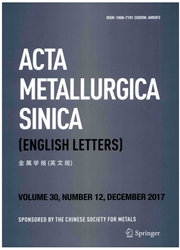

 中文摘要:
中文摘要:
许多因素影响疲劳和焊接关节的裂缝生长行为。在他们进入服务或可变振幅以前,一些结构经常经历相当大的静态的装载周期的装载当他们在服务时。两个都应用的应力和高起始的剩余应力的联合效果被期望引起剩余压力松驰。仅仅一些报纸似乎由认为可变振幅的联合效果周期与剩余压力松驰装载为疲劳分析和裂缝生长处理适当过程。在这篇文章,在 ship-shaped 结构的一些典型焊接连接与 3-D 被调查有弹性塑料的有限元素分析。剩余压力松驰,起始的剩余压力,和在可变振幅以后的应用负担的效果周期的装载被揭示,并且为在热点份量上预言剩余压力的一个公式被建议。基于公式,一个改进疲劳过程被介绍。而且,就剩余压力松驰而言的典型焊接关节的裂缝生长被学习。
 英文摘要:
英文摘要:
Many factors influence the fatigue and crack growth behavior of welded joints. Some structures often undergo fairly large static loading before they enter service or variable amplitude cyclic loading when they are in service. The combined effect of both applied stress and high initial residual stress is expected to cause the residual stresses relaxation. Only a few papers seem to deal with appropriate procedures for fatigue analysis and crack growth by considering the combined effect of variable amplitude cyclic loading with residual stresses relaxation. In this article, some typical welded connections in ship-shaped structures are investigated with 3-D elastic-plastic finite element analysis. The effect of residual stress relaxation, initial residual stress, and the applied load after variable amplitude cyclic loading is revealed, and a formula for predicting the residual stress at hot spot quantitatively is proposed. Based on the formula, an improved fatigue procedure is introduced. Moreover, crack growth of typical weld joints considering residual stresses relaxation is studied.
 同期刊论文项目
同期刊论文项目
 同项目期刊论文
同项目期刊论文
 期刊信息
期刊信息
